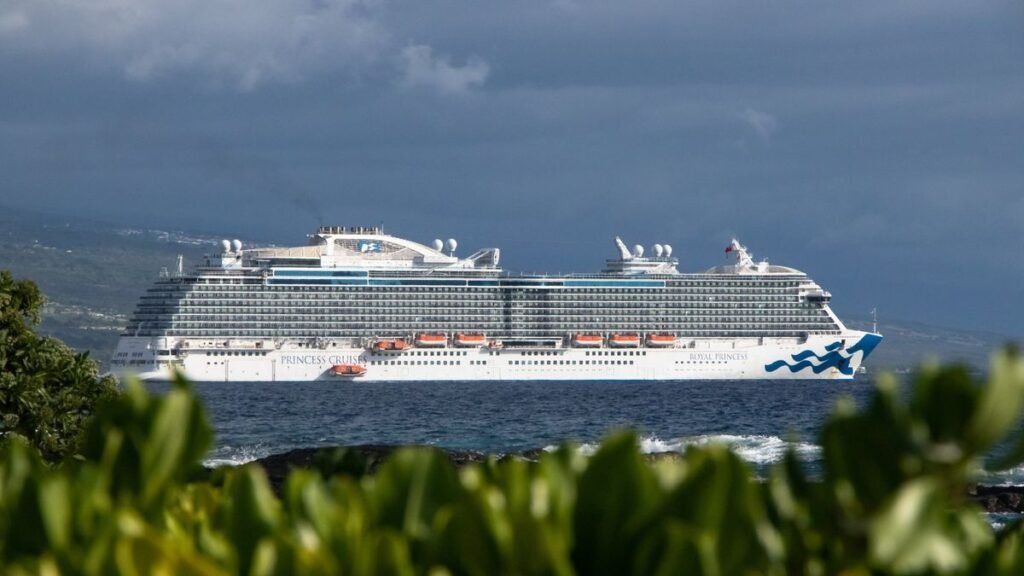Industry stakeholders are urging policymakers to reconsider a plan that would phase out Hawaii cruise calls; a proposal currently under scrutiny as part of broader emissions reduction efforts.
The Hawaii Department of Transportation is advocating for a 50% reduction in cruise calls by 2030, with an additional 50% decrease slated for 2035. Notably, the plan makes an exception for the only large cruise vessel homeported in Hawaii, the Norwegian Cruise Line’s Pride of America. Other large vessels include Hawaii as part of their longer itineraries.
Local policy groups and businesses associated with the cruise industry are advocating for open discussions between policymakers and cruise lines. They argue that there are alternative methods to mitigate cruise ship emissions without fully eliminating cruise calls, emphasizing the need for collaboration.
On August 7, a coalition of 55 stakeholders from Hawaii, coordinated by consultant Denise Clark, convened to strategize a response to the DOT’s proposal. Clark underscored the importance of dialogue, stating that the cruise industry and local businesses are committed to achieving a greener future without sacrificing jobs.
Curtis Chee, director of cruise services at MC&A, which manages cruise turnaround operations, highlighted the potential downsides of the proposed cuts. He noted, “We are eager to work together to find ways to achieve emission reductions without eliminating vessels.” Chee suggested exploring which vessels currently possess low emissions and the potential for them to connect to shore power, thus allowing them to visit the islands more sustainably.
Norwegian Cruise Line’s Pride of America is the only large cruise ship that homeports in Hawaii. Photo Credit: Norwegian Cruise Line
Hawaii Governor Josh Green has made environmental policy a top priority, previously endorsing innovative cruise regulations. Recently, the state legislature enacted an 11% cruise tax intended to support sustainability initiatives.
Malia Blom Hill, policy director at the Grassroots Institute of Hawaii, emphasized the unique cultural approach of the islands, advocating for a more collaborative, rather than adversarial, relationship between cruise lines and policymakers. “If cruise lines approach the situation constructively, it could set a positive tone for cooperation,” she said, warning against the perception of outsiders who are not invested in local interests.
The DOT has indicated a willingness to consider alternatives to completely phasing out cruise operations. Dre Kalili, a deputy director at the department, acknowledged in a presentation that if the industry commits to emission-reduction efforts, such as providing ships capable of connecting to shore power, the state would remain open to different approaches. “Reducing cruise calls emerged as a strategy based on current data and trends,” he stated.
Clark highlighted that Hawaii lacks the necessary shore power infrastructure at present; however, establishing such systems could represent a viable compromise instead of an outright ban. She expressed concern that cruise lines might curtail Hawaii itineraries proactively in response to the state’s proposals, noting, “Given how far in advance port itinerary planners operate, actions taken today could impact us two to three years down the line.”
A spokesperson for Norwegian Cruise Line Holdings reiterated their commitment to dialogue with Hawaii’s DOT, stating that they are open to refining plans to align with mutual goals of emission reduction and enhancing energy security. As the sole cruise operator with a U.S.-flagged ship offering year-round service in Hawaii, the company emphasizes its responsibility to address these concerns seriously.
Other cruise lines have deferred comments to the Cruise Lines International Association (CLIA), which expressed its support for “practical and effective environmental solutions that positively impact the communities we visit.”



